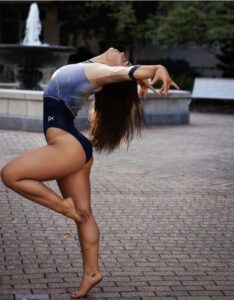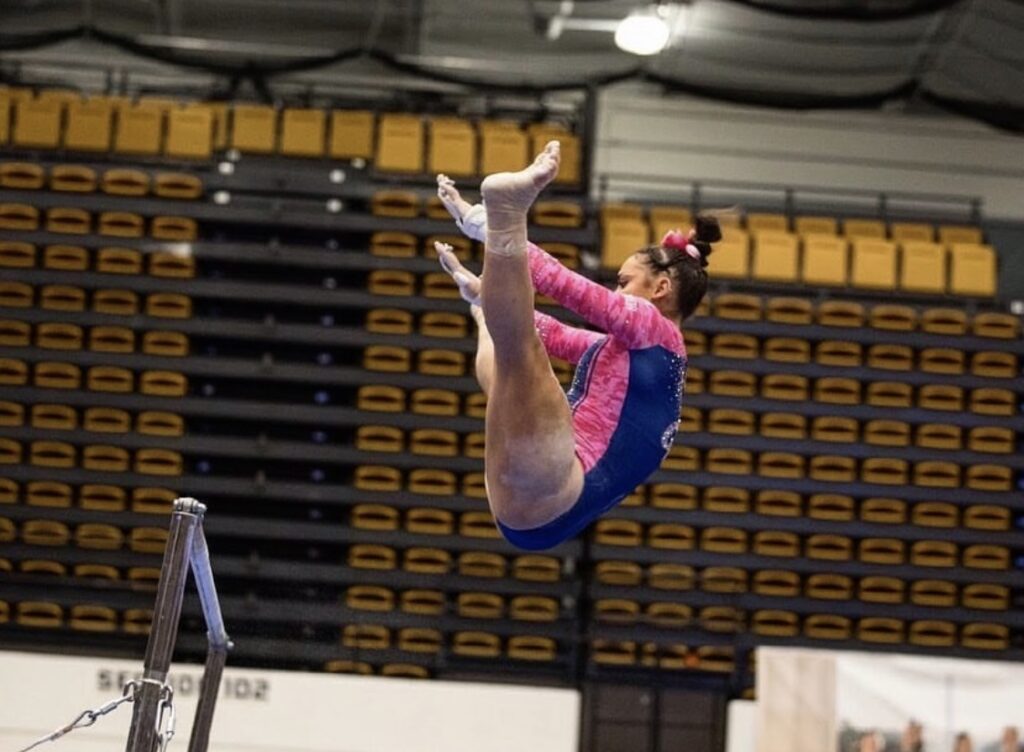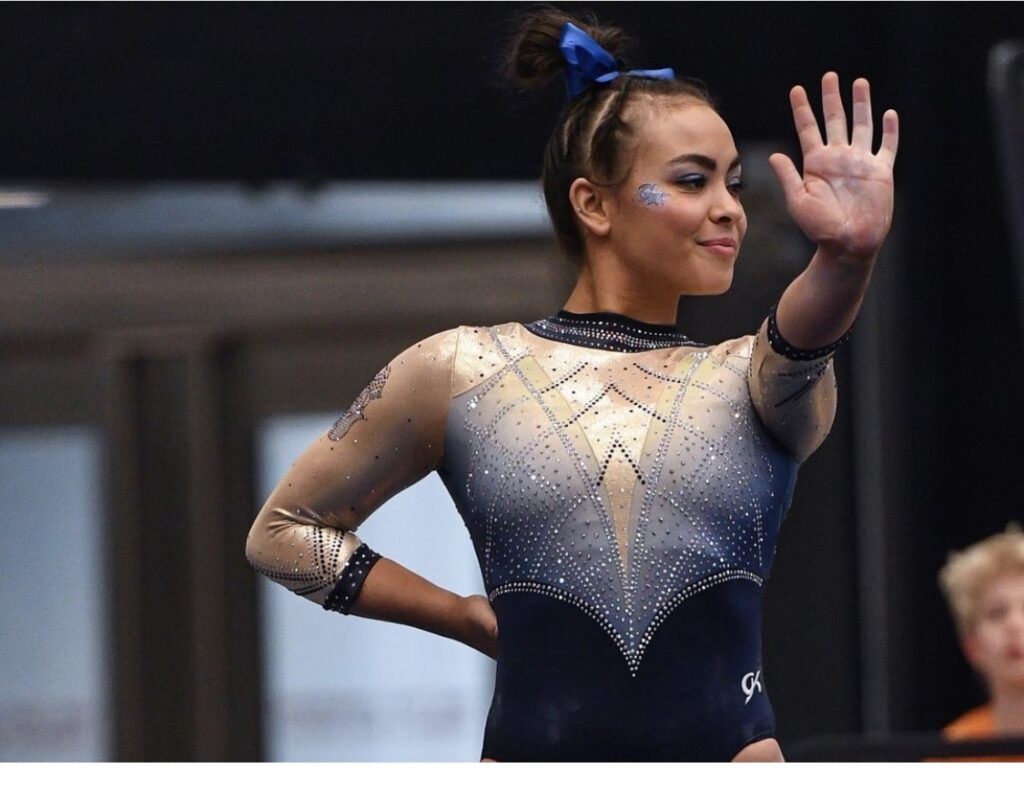Amy Stephens
MS, RDN, CSSD, CEDS
Licensed dietitian
specializing in sports nutrition
and eating disorders
MS, RDN, CSSD, CEDS
Licensed dietitian
specializing in sports nutrition
and eating disorders
I had the opportunity to watch the Olympic gymnastics with my niece, Rachel Kaplan, a Division 1 gymnast and uneven bar specialist. Here are some key excerpts from our conversation that can be valuable for anyone looking to compete in college, especially females in body image-focused sports:

High School: I trained about 27 hours per week. My schedule also included a full day of school then practice from 3 to 7:30 p.m. During weekends, training was less frequent due to traveling and competing. In the winter season, I had a similar routine.
College: I trained around 20 hours per week while being a full-time speech pathology student. I also lifted twice a week and swam during the preseason. I had to run a mile in under 7 minutes, which was more challenging for me than a release move on the bars. Note: The mile time trial was only at George Washington University.

Growing up, my mom and family had good conversations about food, which helped shape my understanding of nutrition.
Yes, I often tried to eat as little as possible, driven by a desire to lose weight and be skinnier. I was concerned about body image and appearance, thinking that being lighter would make gymnastics easier. Coaches made comments about my body from a young age, which influenced my approach to fueling. I didn’t always optimize my nutrition, focusing more on being skinnier rather than properly fueling my body. For example, I would restrict my intake before Sunday night practices and only eat a protein bar. On Saturdays, I’d indulge in pizza and alcohol but then compensate by restricting my food intake the next day. Looking back, I realize that I was motivated by negative reinforcement rather than proper nutrition.
Food occupied my thoughts constantly. I’d go through cycles of eating “well” and restricting carbs, but still wasn’t happy with how I looked. This often led me to abandon my diet, get frustrated, and overeat—sometimes even “healthy” foods like hummus, carrots, popcorn, rice cakes, and nuts. I used MyFitnessPal for a summer to track calories, but I didn’t lose weight and was even more frustrated.
For competitions, my team relied on places like Panera for food and packed snacks for the road. Good restaurants like Olive Garden were also part of the plan. Coaches had specific rules about what to eat—no fettuccine Alfredo, only one breadstick, and no soda.


I usually had hotel oatmeal before competitions. There were times I was so nervous that I couldn’t eat before a competition.
I didn’t eat junk food like chips or cookies. I tried to stick to what I thought would be more beneficial for my performance.
Yes, I had my body composition measured using a Bod Pod at University of Washington. I disliked weighing myself and felt uncomfortable when someone shared their body fat results in the locker room. My friends didn’t care about my body size as much as I did.

Focus on feeling good and performing well rather than just being skinny. Accept your body as it is and don’t let food fears dictate your diet. Choose foods that nourish and energize you rather than restricting yourself based on weight. It’s important to address what’s causing body image issues and shift focus to performance and well-being.